How to Improve RSRP Signal Strength? RSRP, RSSI & RSRQ Explained
It is so bad when seeing a slow-loading site or waiting for a buffering video.
Many families choose 4G or 5G cellular access over cable or fiber Internet. People pick cellular for a variety of reasons, including the cost of wireless broadband, but most commonly because cell service is simply the quickest alternative accessible in rural regions.
However, slow signal strength is common. So, How to improve RSRP - measurement of cellular signal strength?
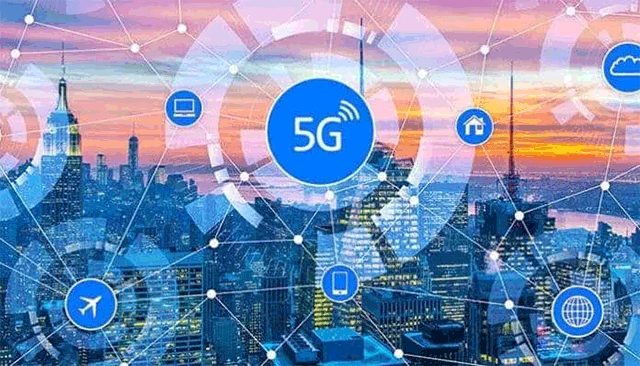
How to improve RSRP signal strength?
Understanding RSRP, RSSI, and RSRQ
There are a few acronyms that you will commonly see when installing and managing a cellular router or deploying a cellular signal booster or amplifier system. They are RSSI, RSRP, and RSRQ that you may be confused about them.
- RSSI (Received Signal Strength Indicator) is a cellular signal strength indicator. RSSI is shown as a negative value ranging from 0dBm (best signal) to -110dBm (worst/no signal). RSSI is a metric used to assess the strength of 3G networks. A cellular router or cellular amplifier with an RSSI of -70dBm indicates a good connection.
- RSRP is an abbreviation for Reference Signal Received Power, which is used for measuring 4G LTE networks. A mobile phone or other LTE-enabled devices would display signal strength in RSRP, with values ranging from 0dBm (Best signal) to -120dBm (weakest/no signal). An RSRP of -95dBm indicates a strong signal, whereas -115dBm indicates a poor signal. Many devices display RSSI as well as RSRP for LTE connections, although RSRP is a more accurate indication of signal strength.
- RSRQ is an abbreviation for Reference Signal Received Quality. This, once again, only pertains to 4G LTE networks and is a measure of cellular signal quality. RSRQ is generally shown in the 0dB (best quality) to -20dB range (lowest quality). A more dependable connection is usually the result of higher signal quality.
See also:
To get the best performance of the cellular connection, you will want to check the RSRP and RSRQ. What is a good RSRP? What is a bad RSRP? and How to improve RSRP? Let’s move to the next part.
What is a bad RSRP?
The way to check RSRP on your phone is so simple. It just takes some minutes to know its result.
For iPhone, you open your “phone” app and type *3001#12345#*. It is important to note that this number must be entered precisely as stated in order to enable Field Test Mode.
-
Enter *3001#12345#* and press “Call”. When called, this will immediately activate the Field Test mode application on your iPhone's Main Menu.
-
Select LTE from the Main Menu.
-
Select “Serving Cell Meas” after heading to LTE.
-
Find “rsrp0,” which identifies the nearest cell tower to which your phone is linked. The matching value represents your cellular signal's dBm measurement.
For Sprint and Verizon with a Qualcomm chipset, the activation and data access methods for Field Test mode differ somewhat.
-
Disable LTE by going to Settings > Cellular > Cellular Data Options.
-
Dial *3001#12345#*.
-
Choose 1x EV-DO.
-
Look for your dBm under “Rx AGCO.”

Sprint and Verizon
If you're using an Android smartphone, we recommend that you use the Network Cell Info Lite app instead of Android's Field Test Mode. When you open the app, your RSRP signal strength is displayed, and SINR is displayed as "RSSNR."
Now, what is your RSRP result? Look at the table to see which level your RSRP stays:
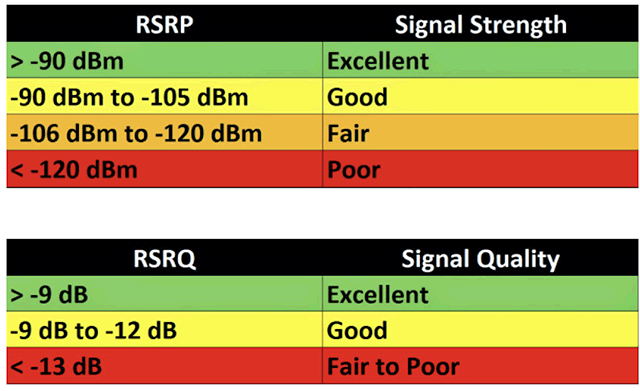
Table of RSRP level
If your RSRP is -105dBm and your RSRQ is -18dB, your cellular network may be sluggish or unreliable.
When installing or repairing any cellular equipment, it is usually a good idea to check the cellular signal strength and quality, since boosting signal strength and quality typically results in a more dependable, consistent connection.
See also: Why does the iPhone have slower cell data than Android?
What factors affect the cell signal strength?
Many issues with adequate signal strength occur when the mobile device is far from the base station or is obscured by numerous barriers. Typically, issues can be resolved by connecting the modem to an appropriate external/outdoor antenna. An antenna of this type can also be used to improve communication with a concrete base station, for example. Before selecting an external antenna, the user should examine the signal characteristics obtained by the LTE modem.
It is common for the transmission speed to be poor despite a high level of LTE signal strength. In this situation, an external antenna should be used and directed to another base station (often poor rates are associated with a large number of users connected to a single base station).
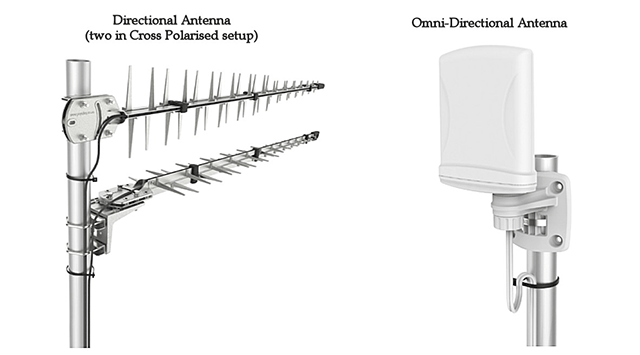
An antenna can be used to improve communication
In addition, SINR is the unit of measurement for signal quality in 4G LTE and 5G networks. Increased SINR can have a significant influence on RSRP results and connection speeds. The easiest approach to enhance SINR is to utilize a directional outside antenna, which may be linked to a signal booster or straight to an LTE or 5G hotspot.
See also:
Multiple bands can be used by your phone or hotspot to connect to the tower at the same time. This is known as "Carrier Aggregation." The fewer bands you are linked to, the slower your data speeds will be. Then you want to find the answer to “How to improve RSRP?”
The higher the number of users on the tower, the lower your data rates will be. In fact, tower congestion depends on the band. Higher frequencies often penetrate structures less than lower frequencies. As a result, higher frequency bands are less crowded in general. Outdoor antennas directly linked to a hotspot or a signal booster might help you gain access to less-congested frequencies.
Your low cell connection can result from the provider’s throttling. If you use an "MVNO" like Tracfone, Straight Talk, or others, you are considered as a second-class citizen on the network of the major carrier. Even if you are directly connected to AT&T, Verizon, T-Mobile, or Sprint, you may be throttled if you consume a lot of data each billing cycle. Throttling is a technique by which carriers de-prioritize specific users or potentially limit their connection speed.
How to improve RSRP?
How to improve RSRP? Let’s try out the 4 best ways that you can do to improve your data rates.
#1. Get a New Phone/Hotspot
If you are using an older device, upgrading to a new phone or hotspot may allow you to connect to new bands. As all we know, technology has been developed nonstop with impressive advanced changes. As a result, newer devices are compatible with newer versions of the LTE or 5G specifications, allowing for higher data speeds.
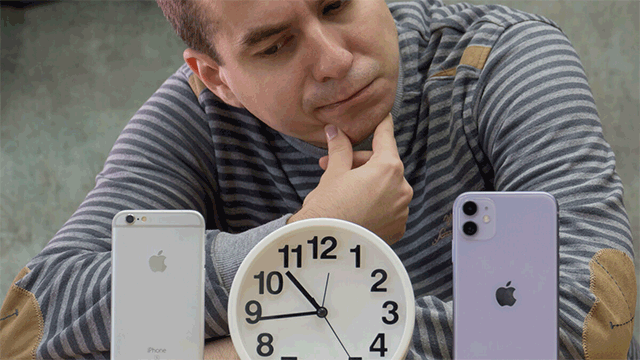
Get a New Phone/Hotspot sometimes is a good way to improve RSRP
#2. Choosing an LTE-Advanced service
Another option to boost speed is to see whether your service provider has LTE-Advanced service in your region. Of course, the user must have a modem that supports this standard.
Sometimes there are issues with the LTE-A service that are caused by the modem communicating with an incorrect base station.
Simply said, the modem interacts with the "strongest" base station, which does not support the LTE-A standard. To address this issue, the user should find (from the operator) where the nearest LTE-A base station with band aggregation is situated (ideally in the opposite direction as the nearest/strongest base station that does not support LTE-A).
In the case study, the user was provided with an LTE-A modem, however, the maximum download speed was only 10 Mbps, and the upload speed was only 1Mbps. The reason for this was that the modem interacted with a base station that did not support the LTE-A standard. See the map below to understand more about the situation.
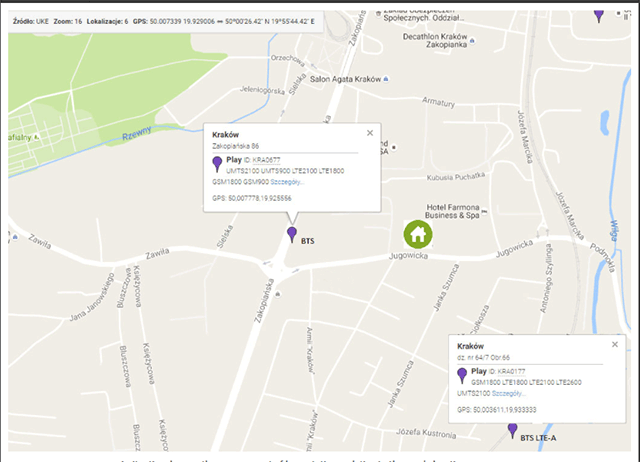
A situational map depicts the position of base stations in relation to the user
The user's modem was linked to a base station in the west that did not support LTE-A, and the data speeds were poor. The application of an external antenna, which was pointed at the base station in the southeast, boosted the speed considerably. The same operator's station uses the LTE-A standard with band aggregation.
#3. Use External Antennas
Many major carriers' hotspots, including AT&T, Verizon, Sprint, and T-Mobile, accept external antenna connectors.
Read the hotspot antenna guides, as well as you can take suggestions of 2x2 MIMO Panel and 2x2 Log Periodic antenna kits if you have one.
External antennas can increase signal strength and quality while also allowing you to access bands that are not available indoors.
Some external antennas will help you improve signal for your 4G LTE or 5G hotspot, modem, router, or hotspot.
#4. Use a Signal Booster
Some hotspots and nearly all phones do not have external antenna connectors. A signal booster is the greatest choice for boosting data speeds when using a phone. Cell phone signal boosters enhance your signal, therefore boosting its power (RSRP). They can enable wireless rebroadcast of better signal indoors when used in conjunction with external antennas.
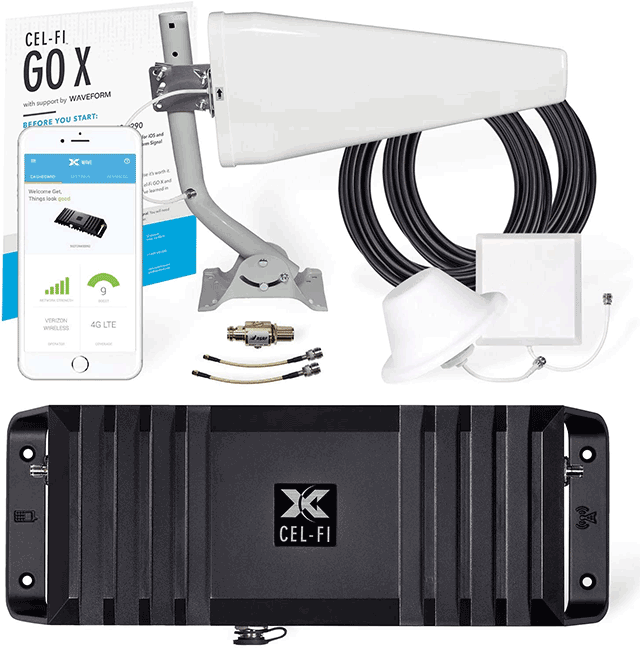
How to improve RSRP? A signal booster is the greatest choice for boosting data speeds when using a phone
To speed up your internet, you can try out one of these best cell phone signal boosters:
See also:
Final words
How to improve RSRP? You can try out those 4 best ways to improve your cell signal strength. Besides, hope that you can understand and distinguish some similar terms such as RSRP, RSRQ, RSSI through this article.
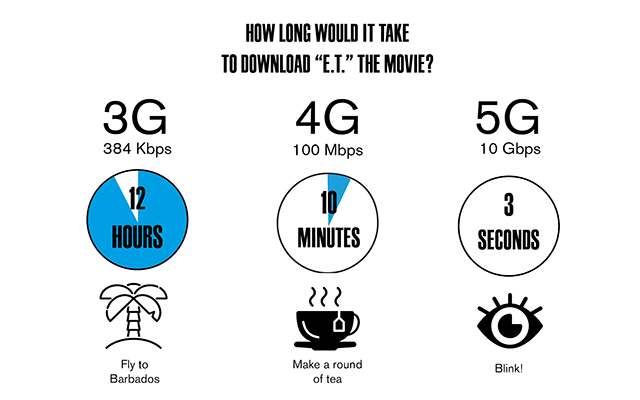

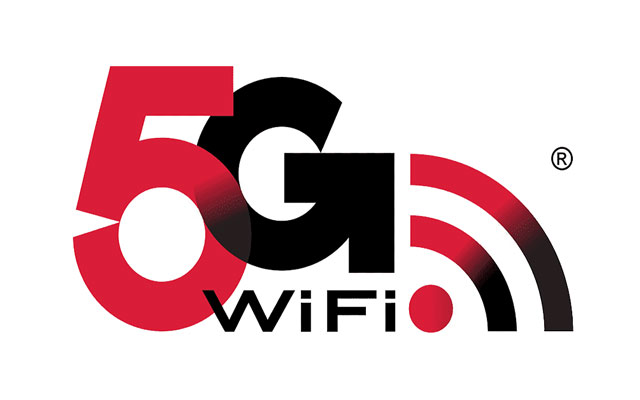


11 Comments
Malia Roberts
Very comprehensive
Leave a Comment
Your email address will not be published. Required fields are marked *MySpeed
Thanks
Leave a Comment
Your email address will not be published. Required fields are marked *Emma Murray
How can I check RSRP on iPhone?
Leave a Comment
Your email address will not be published. Required fields are marked *MySpeed
Simply download the Mode Field Test app from the App Store. Then open it and tap on LTE. Look for the RSRP0 value, which indicates your signal strength.
Alternatively, you could contact your carrier's customer support to get more information about your iPhone's signal strength in a particular area.
Leave a Comment
Your email address will not be published. Required fields are marked *Emma Murray
I got it, thanks
Leave a Comment
Your email address will not be published. Required fields are marked *Evelyn Gray
Why is RSRP negative?
Leave a Comment
Your email address will not be published. Required fields are marked *MySpeed
More negative values indicate weaker signal strength and less negative values reflect stronger signal strength
Leave a Comment
Your email address will not be published. Required fields are marked *Gwendolyn Morales
Can high antennas improve RSRP?
Leave a Comment
Your email address will not be published. Required fields are marked *MySpeed
High antennas can have a positive impact on RSRP in certain situations by improving signal coverage, strength, and quality. However, the actual improvement will depend on various factors
Leave a Comment
Your email address will not be published. Required fields are marked *Jimbob
This paragraph makes no sense:
A mobile phone or other LTE-enabled devices would display signal strength in RSRP, with values ranging from 0dBm (weakest) to -120dBm (weakest/no signal). An RSRP of -95dBm indicates a strong signal, whereas -115dBm indicates a poor signal.
Leave a Comment
Your email address will not be published. Required fields are marked *MySpeed
You can look at these numbers below to understand more:
- RSRP > -84 dBm: Excellent
- RSRP from > -85 dBm to -102 dBm: Good
- RSRP from > -103 dBm to -111 dBm: Fair
- RSRP < -120dBm: Poor signal
Which means that if you measure your RSRP result of -95dBm, your signal strength is good.
If the result is -115dBm, you should check your signal connection due to poor performance.
Leave a Comment
Your email address will not be published. Required fields are marked *Leave a Comment
Your email address will not be published. Required fields are marked *